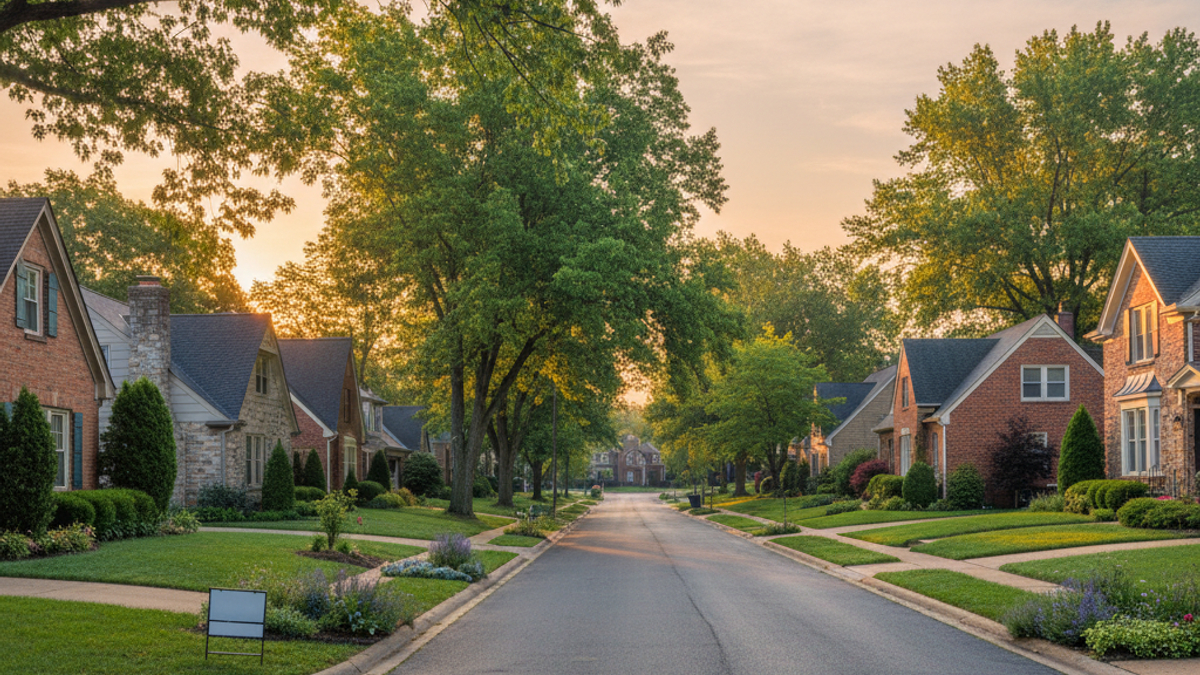The Five-Year Guideline Everyone Quotes
Some folks treat the “own for five years” mantra like gospel. It didn’t fall out of thin air. Here’s the quick math:
- Closing costs plus Missouri transfer taxes plus fresh paint and maybe new carpet—together they shave 7 to 9 percent right off the top.
- Broker fees grab another slice when you do sell. Think 6 percent, give or take.
- Add the bite from mortgage interest in year one and property taxes the whole way through.
In a vacuum, you need at least moderate appreciation just to break even. Nationally, five years is often enough for prices to rise 15 to 20 percent, which backfills those expenses. Yet real life isn’t a vacuum. Columbia’s annual appreciation averaged about 6 percent from 2018 through 2023 per Boone County MLS data. Quick calculation: buy at $250,000, hold five years, you’re staring at roughly $335,000. That’s a tidy jump and usually offsets costs with cash left over.
But…
- If you bought during the 2021 frenzy at the very peak, prices haven’t climbed as steeply since, so your breakeven might slip past the five-year line.
- Locked in a 2.9 percent rate? Trading up to a 6 percent rate six months later wipes out a chunk of equity through higher payments, even if your sale price looks good on paper.
Bottom line: Five years is a solid default, but never the final answer.
The IRS Two-Out-Of-Five Rule—A Helpful Little Loophole
Tax law loves a catchy phrase, and the “two out of five” rule is your friend. Live in the house for 24 months within the last 60 and you can exclude up to $250,000 in capital gains if you’re single, $500,000 if you’re married. And no, the months don’t have to be consecutive. Handy for folks who bounce away for short-term jobs or grad school and then return.
Miss that 24-month mark and Uncle Sam wants his slice. Even a modest gain can leave you writing a check you never budgeted. That alone nudges many homeowners to stay put until they cross the two-year finish line, even when everything else says, “Sell already.”
Columbia’s Equity Clock—Is It Speeding Up or Slowing Down?
Let’s talk local data, the stuff you won’t glean from a national headline.
Boone County numbers as of early 2024:
- Median sale price: about $279,000 (up roughly 4 percent year-over-year).
- Average days on market: 23—homes still move quickly, just not at warp speed like 2021.
- Inventory: hovers near two months, which is tight but inching upward.
This combo means sellers still hold some bargaining power, yet buyers aren’t throwing ridiculous offers after the first open house anymore. Translation: short-term flips aren’t the easy layup they were, but steady appreciation continues.
Appreciation is only half the tale. You also whittle down the principal each month. At a 30-year fixed 4 percent note, year two knocks about $5,000 off principal on a $250,000 loan. By year five you’ve cut roughly $16,000. That’s equity you can tap for the move-up home or stash away for a rainy day.
Costs That Sneak Up and Slash Your Proceeds
Sell too early and these fees jump out like a cartoon villain:
- Brokerage commission: Still the biggest line item. Even if you negotiate 5 percent, that’s $15,000 on a $300,000 deal.
- Seller concessions: Buyers in Columbia often ask for closing credits or a home-warranty toss-in. Plan on 1 percent.
- Repairs from the inspection report: Water heater on its last leg? Surprise bill.
- Staging and marketing: Professional photography, fresh mulch, an overdue roof cleaning. Fast money out, uncertain return in.
Add everything and it isn’t crazy to drop $25,000 just to exit. If you haven’t owned long enough for appreciation plus principal pay-down to outrun that number, you’re feeding the fee furnace.
Personal Life Check—Sometimes Money Isn’t the Main Character
Numbers matter, but your life may not sit patiently waiting for them to pencil out.
- Landed a position at University of Missouri across town that shrinks your commute from 35 minutes to 7? Time saved can justify an earlier sale.
- Additions to the household—new baby, grandma moving in, or two remote workers needing separate offices—can demand space now, not in three years.
- Relationship shake-ups happen, and splitting equity might be cheaper than juggling separate mortgages.
None of these scenarios wave a magic wand over closing costs or tax rules. They do, however, give you a real-life upside that spreadsheets struggle to quantify.
Renovation Math—Will a Kitchen Facelift Fast-Track Your Timeline?
Columbia remodel contractors quote about $28,000 for a mid-range kitchen redo. National Association of Realtors pegs typical resale bump at 52 percent of cost recovered in year one. So you could pour in $28k and maybe see $14k back right away. Not stellar.
Where it does pay off: staying put for a couple extra years, enjoying the upgrade, then listing. You collect lifestyle value first, resale value later.
Quick rule of thumb most appraisers lean on here: every $1 of cosmetic work adds roughly 50-60 cents to value in the first 12 months, a little more if inventory is tight and buyers crave move-in-ready.
So no, you can’t demo your way past the holding-period problem overnight.
Watching the Market’s Pulse—Seasonal and Economic Signals
You can’t time Columbia real estate like day-trading crypto. Still, a few patterns repeat:
- Spring surge
- Listings spike in March, closings balloon in May and June. Buyers with school-age kids want keys before August. If you’re flirting with that five-year mark, targeting a March list date often lands multiple offers fast.
- Fall finesse
- From late August to early November, Columbia sees a second mini-wave. University staff rotate in, freshmen parents hunt condos. Not as frenzied as spring, but still healthy.
- Winter lull
- December to early February cools off. Serious buyers remain; casual tire-kickers vanish. If you must sell in winter, price competitively and crank up the virtual tour game.
On the broader economic front:
- Interest rates: Each 1-point rise knocks roughly 10 percent off the average buyer’s purchase power. If rates hiccup upward again, expect prices to plateau until incomes catch up.
- Employment data: University of Missouri, two major hospitals, and a growing tech corridor keep the payroll engine running. So far, that stability shelters Columbia from wild swings seen elsewhere.
If rates dip into the low five-percent range, you’ll likely witness a mini-boom. Jump on it if you’re within spitting distance of your equity target.
Real Columbia Stories—Fast, Medium, Slow
Nothing like hearing what actually happened down the street.
- The Three-Year Exit
- A couple snagged a south-side ranch in late 2020 for $240k. They finished the basement for $17k, then sold in early 2024 for $320k. After commissions and loan payoff, they pocketed about $43k. Basement sweat equity plus pandemic-era appreciation made a shorter hold work.
- The Six-Year Slow Burn
- Single buyer purchased a starter townhouse near Grindstone for $160k in 2017. No major renovations, just steady mortgage payments and mild appreciation. Listed mid-2023 at $245k, netted $58k cash after costs—used it to vault straight to a $350k new construction without PMI.
- The Twelve-Month Misfire
- Investor grabbed a north-Columbia flip in 2022 hoping for quick gains. Lumber prices soared, labor backlog dragged construction six months. By the time it hit the market, rates jumped and buyers balked. After contractor overruns, the investor broke even. Ouch.
Moral of the tales: Columbia rewards patience more often than speed.
Checklist—Are You Actually Ready To Sell?
Run through this quick audit. If you can tick at least five yes-boxes, odds are good it’s go-time.
- You’ve crossed the 24-month residency requirement.
- Estimated equity—appraised value minus mortgage balance—covers broker fees plus 10 percent cushion.
- A new mortgage rate won’t double your monthly payment on the upgrade.
- Life changes demand a different layout or location sooner than later.
- Local inventory in your price bracket is under three months, showing strong demand.
- Interest rates are steady or dipping—not spiking.
- You’ve mapped closing dates so you’re not couch-surfing between homes.
- Emergency fund still intact even after moving expenses.
Miss more than half? Might be smarter to stay put, build equity, and revisit in six to twelve months.
Quick Ways To Boost Value While You Wait
If the math says “hold,” use the time wisely:
- Swap dated light fixtures for brushed-steel LED units.
- Pressure-wash siding and walkways; grime subtracts dollars.
- Declutter one closet per weekend; it’s free square footage.
- Touch-up trim paint where the dog’s tail did a number on it.
- Plant low-maintenance native shrubs; Columbia springs make them pop.
None of these break the bank, but together they bump perceived value and shave days off market time later.
Ready To Make Your Move?
So, how long should you own a home before selling Columbia real estate? Long enough for appreciation plus principal pay-down to outrun the twin enemies—transaction costs and taxes. For most owners that’s about five years, but two can work in a sizzling market, and seven may feel right if you bought at a peak.
Gauge local data, tally your true costs, weigh your life goals. Then move with confidence instead of second-guessing every headline.
Need a no-pressure equity check? Shoot me a message, and I’ll run the numbers specific to your address. Could be the nudge that turns “maybe later” into “why not now.”







